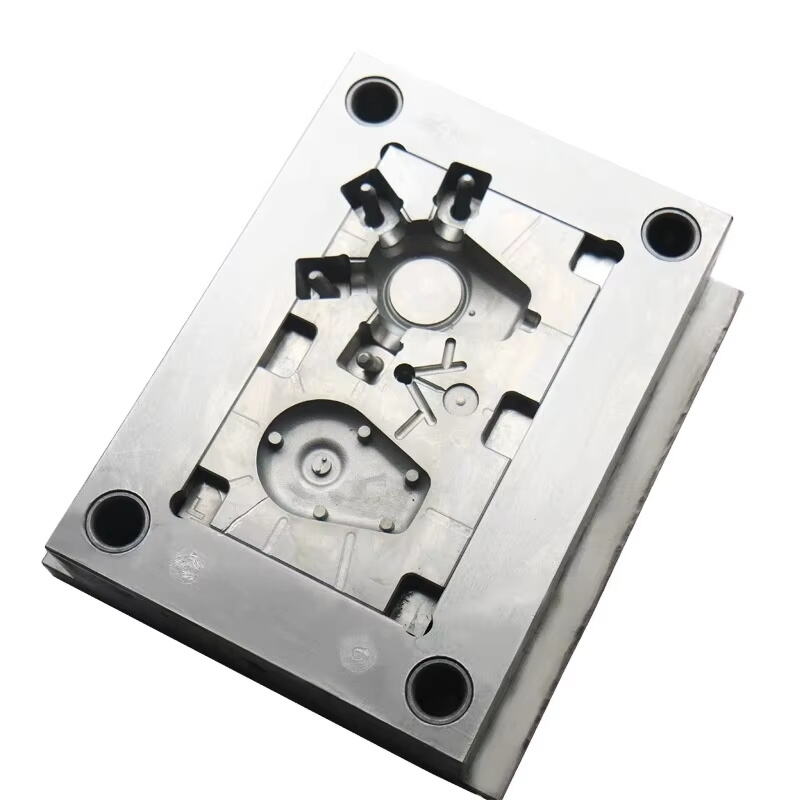Introduction to Plastic Injection Molds
Plastic injection molding is a fundamental manufacturing process that plays a pivotal role in producing a myriad of products across various industries, such as automotive, consumer goods, and packaging. This technique involves melting plastic pellets and injecting them into a pre-designed mold, where the material cools and solidifies to form the desired shape. This process is renowned for its capacity to produce items with precision and uniformity, making it indispensable in crafting everything from small electronic components to large automobile panels.
The integral role of plastic injection molds in this process can't be overstated. These molds serve as the blueprint for the final product, carefully shaping molten plastic into detailed, intricate configurations. The accuracy and quality of the final product are heavily dependent on the mold's design and construction. Proper mold design is not only crucial for achieving the desired product specifications but also influences the efficiency of the production process. A well-designed mold can significantly enhance productivity and reduce production costs by minimizing material wastage and decreasing cycle times.
Moreover, the significance of an effective design in mold creation cannot be overlooked, as it directly impacts the operational efficiency and cost-effectiveness of manufacturing. A meticulously designed plastic injection mold ensures smooth production runs, reduces chance of defects, and achieves optimal part quality. By integrating advanced design techniques and considerations, such as appropriate cooling systems and correct sizing of internal cores and cavities, manufacturers can boost their operational efficiency, ensuring streamlined processes and superior product output.
Key Design Factors in Plastic Injection Mold Design
Understanding the critical design factors in plastic injection mold design is pivotal for manufacturing success. These factors influence the quality, cost, and efficiency of production, making them essential considerations in any project.
Material Selection and Compatibility
Selecting appropriate materials for injection molds is crucial for ensuring durability and efficient production cycles. Common materials used include steel and aluminum, each offering distinct benefits: steel provides excellent durability and wear resistance, while aluminum is lightweight and allows for faster mold cycles. Material choice impacts not only the mold’s lifespan but also the compatibility with different plastic resins, affecting the overall production efficiency.
Part Geometry and Draft Angles
The geometry of the part significantly affects mold design, particularly in terms of draft angles that facilitate easy mold release. Proper drafting reduces ejection force, minimizes wear on the mold, and prevents damage to the product. Recommended draft angles vary depending on material and surface finish but generally range from 1 to 5 degrees. Effective draft design ensures both high product quality and longer mold life.
Wall Thickness and Uniformity
Wall thickness plays a critical role in mold cooling, strength, and warping during production. Uniform wall thickness promotes even cooling and reduces the likelihood of shrinkage-induced defects. It's advisable to maintain a nominal wall thickness that aligns with the selected material's characteristics, avoiding excessively thick or thin walls which may lead to cost increases or incomplete part formation.
Cooling System Design
An effective cooling system is essential for reducing cycle times and improving production efficiency. Cooling channels must be strategically designed to ensure uniform temperature distribution across the mold. Methods such as conformal cooling, baffles, and bubblers can be tailored to meet specific design needs, allowing for faster cooling without compromising part quality.
Ejection System Considerations
The design of the ejection system is integral to product quality and mold longevity. Various ejection methods, including mechanical pins and air ejection, should be evaluated based on the complexity and material of the product. A well-considered ejection system minimizes the risk of part distortion and reduces cycle times by efficiently removing the cooled product from the mold.
In conclusion, focusing on these key design factors enhances the success of injection mold projects, ensuring high-quality outputs and efficient production processes. Proper attention to material selection, part geometry, wall thickness, cooling, and ejection systems sets the foundation for effective injection mold design, ultimately leading to increased productivity and reduced production costs.
Mold Durability and Maintenance
Ensuring long-lasting molds and ease of maintenance is vital for sustained production efficiency. Regular inspections and cleaning are essential practices that can prevent wear and tear, ensuring that the mold functions smoothly throughout its lifespan. By implementing a consistent maintenance schedule, manufacturers can significantly reduce the frequency and extent of unscheduled downtimes, preserving mold integrity and maintaining quality output.
Investing in high-quality mold materials and superior design features enhances durability and minimizes maintenance intervals. Choosing materials like hardened steel can contribute to longer life spans and reduced wear, thereby cutting down both repair costs and production delays. Enhanced design features, such as self-lubricating components, further decrease the necessity for frequent manual interventions. This strategic investment can translate into substantial cost savings over time, making it economically advantageous.
The importance of maintenance in extending mold longevity and boosting production efficiency is supported by industry statistics. Expert analyses suggest that regular maintenance can increase mold life by up to 20%, indirectly enhancing production efficiency by 15-20% through reduced downtime and consistent quality. These figures underscore the significance of robust maintenance protocols in maintaining optimal operational performance.
Conclusion: Quality and Efficiency in Production
In summary, the importance of design details in producing reliable and efficient molds was highlighted with a focus on critical aspects such as material selection and cooling systems. These elements play a vital role in enhancing the overall quality of the end product and ensuring manufacturing efficiency. A thoughtful selection of materials can ensure the mold's capability to withstand high pressures and temperatures, while a well-designed cooling system can accelerate cycle times, reducing production costs.
Attention to these design factors, such as choosing the right materials and optimizing cooling systems, significantly impacts product quality and manufacturing efficiency. By meticulously evaluating these elements during the mold design phase, manufacturers can produce parts with superior precision and minimal defects, ensuring that production processes remain streamlined and cost-effective.
Looking to the future, industry experts suggest that continuous improvement and innovation will drive trends in plastic injection mold design. The emphasis will likely be on integrating advanced technologies and methodologies to further enhance mold performance and efficiency. This evolution will cater to the growing demand for precision-engineered parts in various sectors, emphasizing sustainable and innovative approaches to mold production. As design plastic injection molds continue to evolve, businesses adopting these forward-thinking practices will remain at the forefront of manufacturing excellence.
FAQ
What is plastic injection molding?
Plastic injection molding is a process that involves melting plastic pellets and injecting them into a mold where they cool and solidify into specific shapes.
Why is mold design important in injection molding?
Mold design is essential because it directly impacts the quality, precision, and uniformity of the final product, as well as the efficiency and cost-effectiveness of the production process.
What are common materials used for making injection molds?
Common materials include steel and aluminum. Steel offers durability and wear resistance, while aluminum is lightweight and speeds up mold cycles.
How does wall thickness affect injection molding?
Wall thickness affects cooling, strength, and warping during production. Uniform wall thickness promotes even cooling and reduces shrinkage defects.
How can mold maintenance affect production efficiency?
Regular maintenance can extend mold life by preventing wear and tear, reducing unscheduled downtimes, and maintaining consistent production quality.

